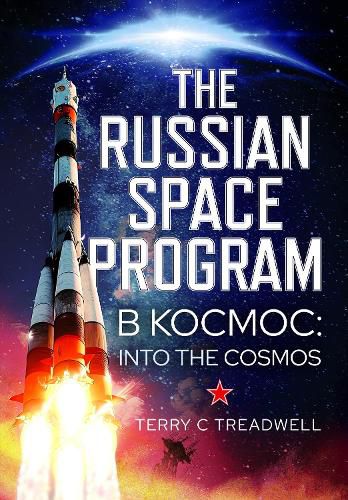Readings Newsletter
Become a Readings Member to make your shopping experience even easier.
Sign in or sign up for free!
You’re not far away from qualifying for FREE standard shipping within Australia
You’ve qualified for FREE standard shipping within Australia
The cart is loading…






This is not the definitive work on the Russian space program, but it will give the reader an insight into a political and complex world of space science. Although the success of the high-profile American space program had grabbed all the headlines, Russia slowly, but consistently, has continued to expand their contribution to the exploration of space. Since the phasing out of the Space Shuttle, it is the Russians that now have the main responsibility to replace the crewmembers and take supplies to the space station, although now the American SpaceX program has eased that burden. The book covers the early triumphs and disasters of the Russian space program and the animals that helped pave the way, although the casualties never came to light until many years later, when the understanding and tensions between the East and West eased. Despite the number of setbacks that dogged the early years, Russia slowly developed spacecraft that, although considered by some to be very basic, were reliable. The development of the Salyut and Mir space stations created a closer understanding between the nations, the work and experiments carried out by the cosmonauts in these early space stations, were almost all military and were either secret or restricted, so little is known about them. However, with the arrival of the International Space Station came a degree of openness and great strides were made in the understanding of the physiological and psychological effects of the men and women involved in working in space and a weightless environment. Unfortunately, since the war in the Ukraine, Russia's relationship with the West has deteriorated considerably and co-operation within the space program is very limited, although the two main powers have reached an agreement regarding the transportation of crews and supplies to the ISS. It is thought however that the International Space Station days are numbered and will close in 2031. The book also makes reference to only a small number of Kosmos missions, those mentioned are the only ones with any connection to space exploration. The remainder, and there have been over 2,500 Kosmos missions, were either military or scientific satellites. AUTHOR: Terry C. Treadwell was born and educated in Bournemouth. Having served in the Royal Air Force, in telecommunications, and travelled the world quite extensively, including working in Australia for a short period, he was European Correspondent for Naval Aviation News (the official aviation magazine for the US Navy) and Wings of Gold (US) for ten years. Married with a son, Terry was employed by British Telecom for most of his working life, before he retired in 1995. 80 colour, 80 b/w illustrations
$9.00 standard shipping within Australia
FREE standard shipping within Australia for orders over $100.00
Express & International shipping calculated at checkout
Stock availability can be subject to change without notice. We recommend calling the shop or contacting our online team to check availability of low stock items. Please see our Shopping Online page for more details.
This is not the definitive work on the Russian space program, but it will give the reader an insight into a political and complex world of space science. Although the success of the high-profile American space program had grabbed all the headlines, Russia slowly, but consistently, has continued to expand their contribution to the exploration of space. Since the phasing out of the Space Shuttle, it is the Russians that now have the main responsibility to replace the crewmembers and take supplies to the space station, although now the American SpaceX program has eased that burden. The book covers the early triumphs and disasters of the Russian space program and the animals that helped pave the way, although the casualties never came to light until many years later, when the understanding and tensions between the East and West eased. Despite the number of setbacks that dogged the early years, Russia slowly developed spacecraft that, although considered by some to be very basic, were reliable. The development of the Salyut and Mir space stations created a closer understanding between the nations, the work and experiments carried out by the cosmonauts in these early space stations, were almost all military and were either secret or restricted, so little is known about them. However, with the arrival of the International Space Station came a degree of openness and great strides were made in the understanding of the physiological and psychological effects of the men and women involved in working in space and a weightless environment. Unfortunately, since the war in the Ukraine, Russia's relationship with the West has deteriorated considerably and co-operation within the space program is very limited, although the two main powers have reached an agreement regarding the transportation of crews and supplies to the ISS. It is thought however that the International Space Station days are numbered and will close in 2031. The book also makes reference to only a small number of Kosmos missions, those mentioned are the only ones with any connection to space exploration. The remainder, and there have been over 2,500 Kosmos missions, were either military or scientific satellites. AUTHOR: Terry C. Treadwell was born and educated in Bournemouth. Having served in the Royal Air Force, in telecommunications, and travelled the world quite extensively, including working in Australia for a short period, he was European Correspondent for Naval Aviation News (the official aviation magazine for the US Navy) and Wings of Gold (US) for ten years. Married with a son, Terry was employed by British Telecom for most of his working life, before he retired in 1995. 80 colour, 80 b/w illustrations